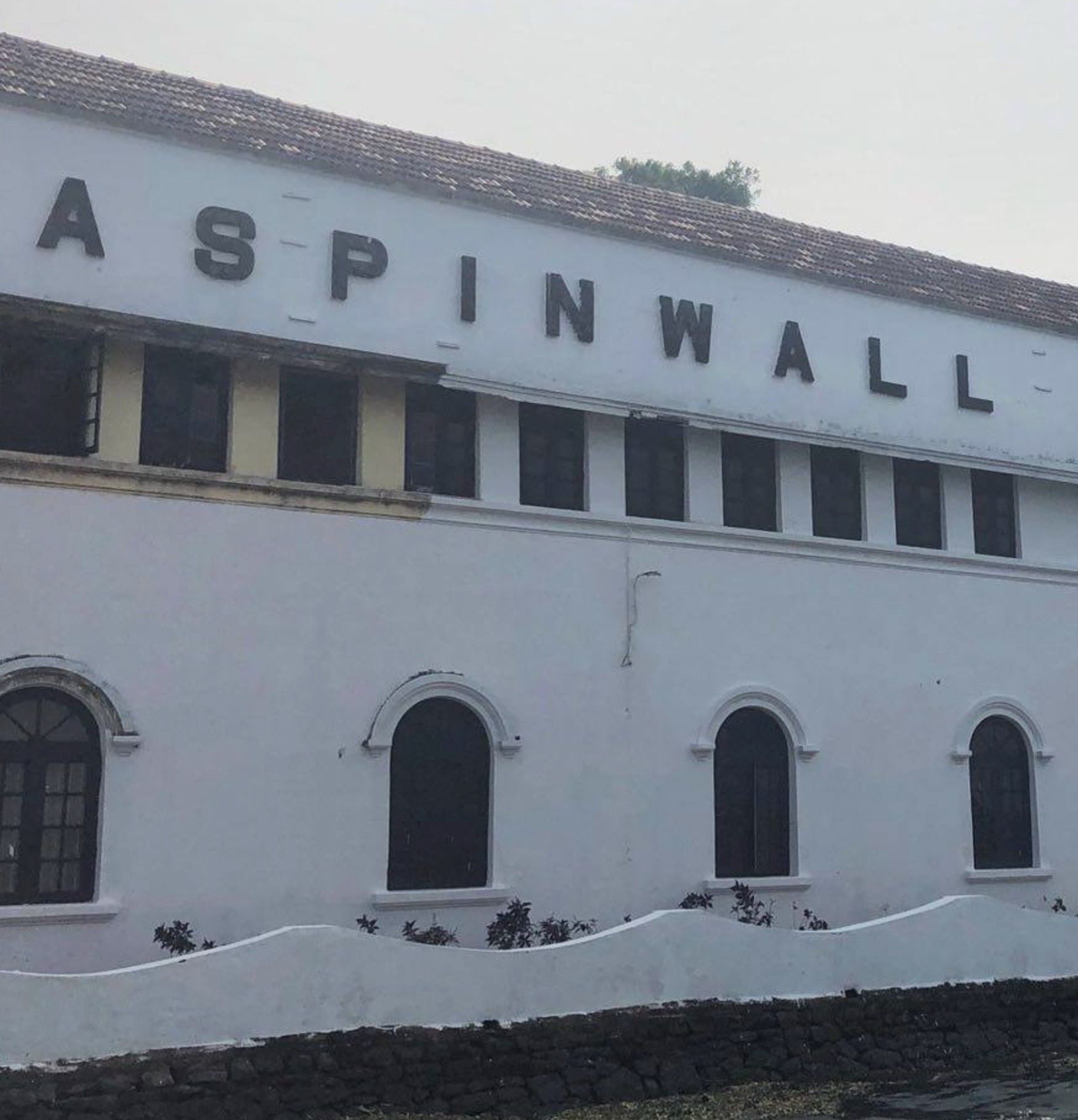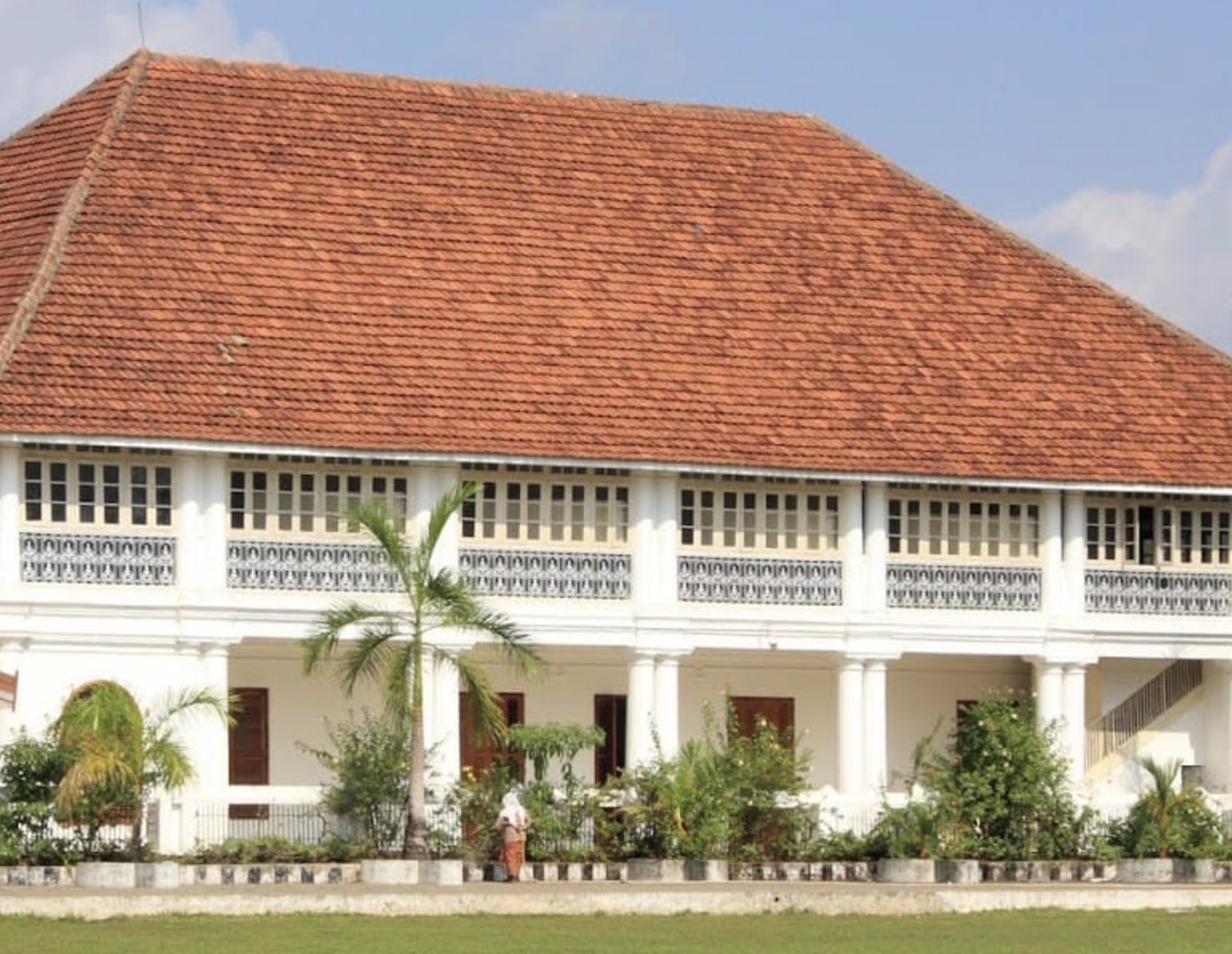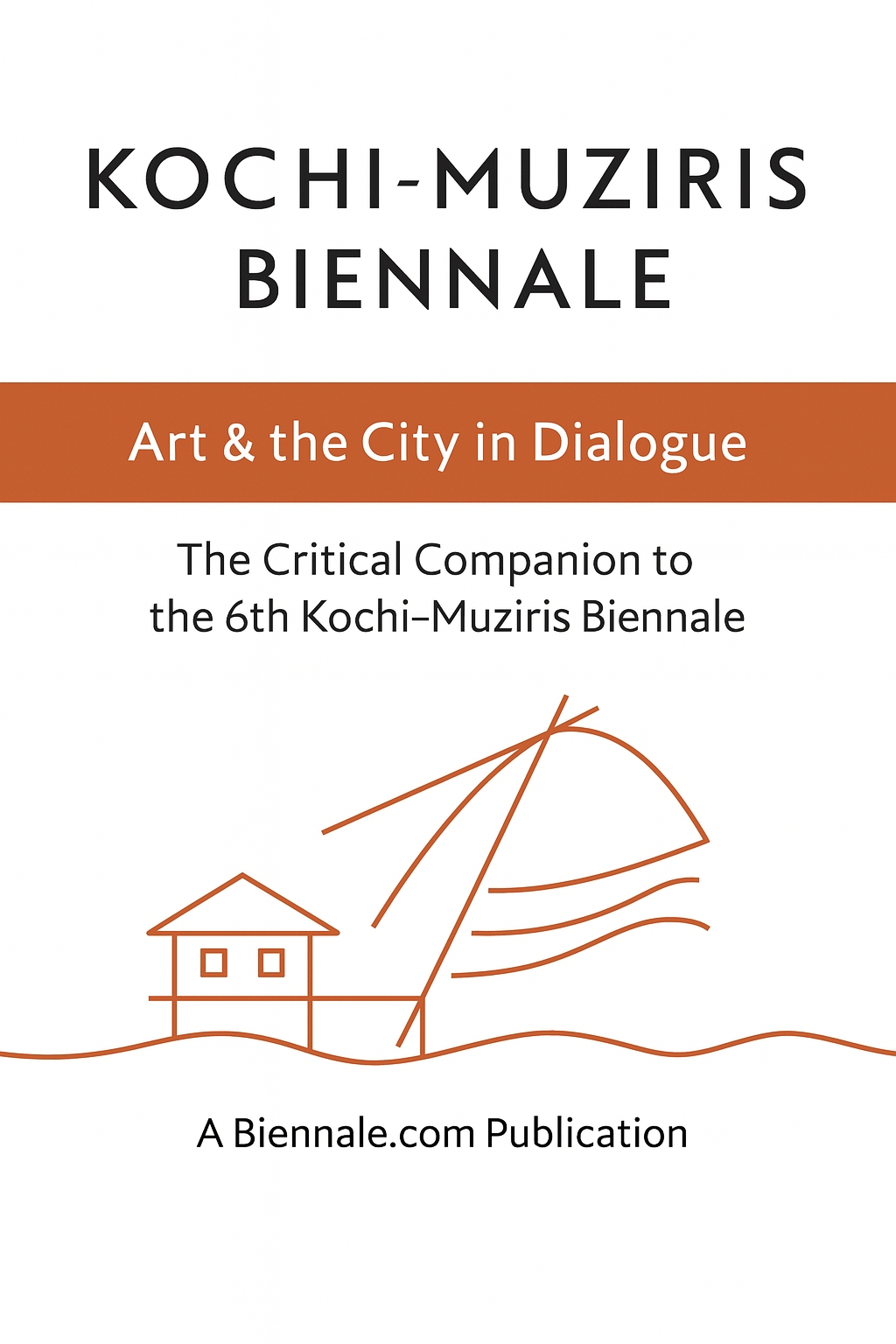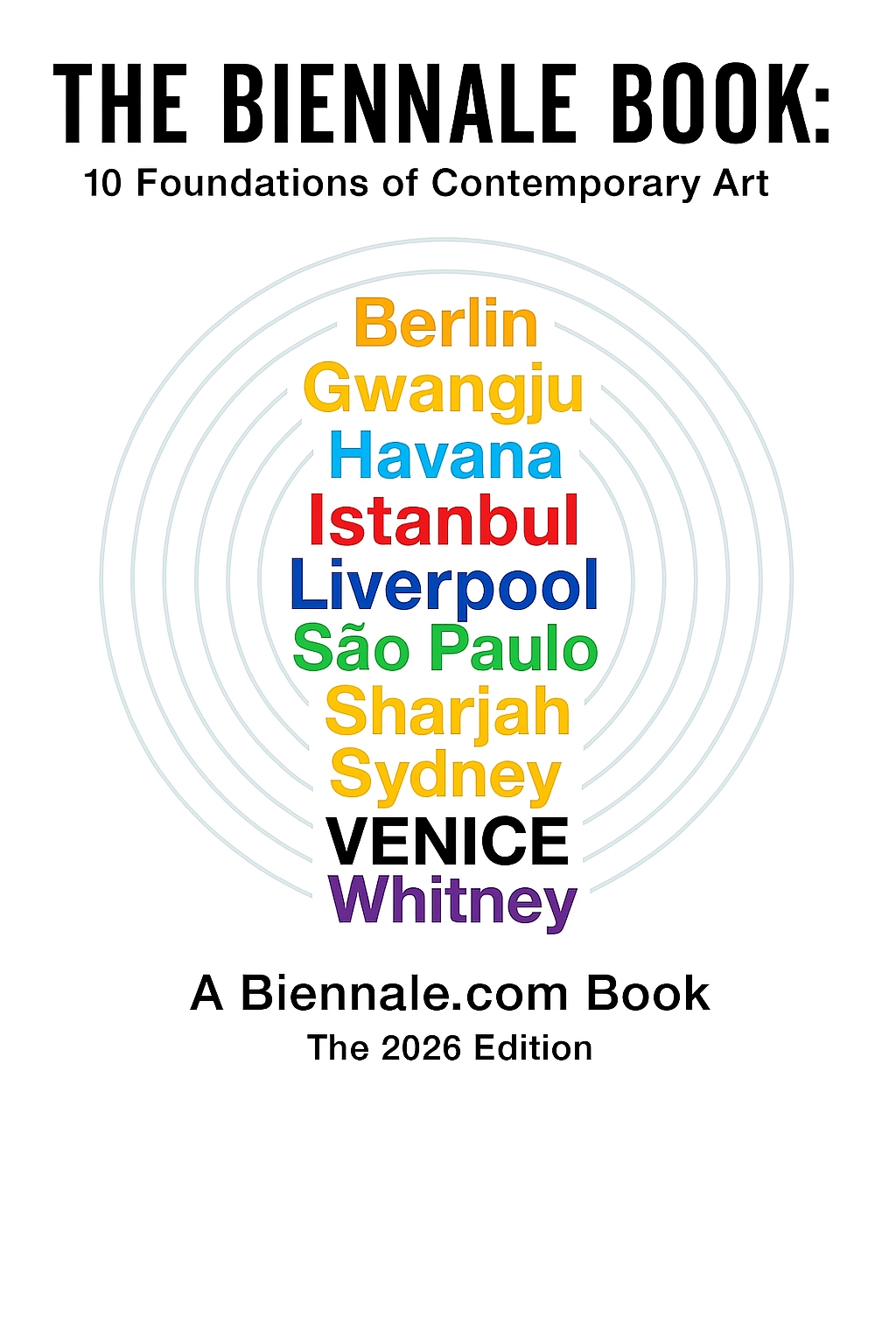Introduction
The Kochi-Muziris Biennale stands as South Asia's preeminent platform for contemporary art, transforming the historic port city of Kochi into a vibrant cultural laboratory every two years. Since its inception in 2012, this artist-initiated and artist-led exhibition has dramatically reshaped India's cultural landscape, creating a vital space for artistic experimentation, cross-cultural dialogue, and public engagement with contemporary art.
Set against the backdrop of Fort Kochi's colonial architecture and Mattancherry's layered histories, the Biennale animates heritage buildings, warehouses, and public spaces with site-responsive works that engage with both global artistic concerns and local cultural contexts. This distinctive approach has positioned Kochi not only as a significant node in the international biennial circuit but as a model for how contemporary art can activate historical spaces and engage diverse publics.
What distinguishes the Kochi-Muziris Biennale is its commitment to an artist-curator model, where each edition is conceptualized by practicing artists rather than professional curators. This approach has fostered an exhibition culture that values process, experimentation, and cultural exchange over market-driven spectacle, creating space for voices and perspectives often marginalized in the global art world.
The Artists of 'For the Time Being'
The Kochi Biennale Foundation has announced the highly anticipated list of participating artists for the sixth edition of the Kochi-Muziris Biennale. Titled "For the Time Being" and curated by acclaimed performance artist Nikhil Chopra with HH Art Spaces, the 2025-26 edition brings together a dynamic mix of 64 artists and collectives from across India and the globe.
The list signals a deep engagement with the Biennale's artist-led ethos and the curatorial theme of "embodied knowledge and performance." It places world-renowned figures like Marina Abramović, Tino Sehgal, Nari Ward, and Adrian Villar Rojas in vibrant dialogue with revered senior Indian artists, including Gulam Mohammed Sheikh, Gieve Patel, and Jyoti Bhatt.
Participating Artists
- Abul Hisham
- Aditya Puthur
- Adrian Villar Rojas
- Ali Akbar PN
- Anja Ibsch and Grüntaler9
- Arti Kadam
- Athina Koumparouli
- Bani Abidi and Anupama Kundoo
- Bhasha Chakrabarti
- Biraaj Dodiya
- Birender Yadav
- Cinthia Marcelle
- Dhiraj Rabha
- Dima Srouji and Piero Tomassoni
- Dineo Seshee Bopape
- Faiza Hasan
- Gieve Patel
- Gulam Mohammed Sheikh
- Hicham Berrada
- Himanshu Jamod
- Hiwa K
- Huma Mulji
- Ibrahim Mahama
- Jayashree Chakravarty
- Jompet Kuswidananto
- Jyoti Bhatt
- Khageswar Rout
- Kirtika Kain
- Kulpreet Singh
- Lakshmi Nivas Collective
- LaToya Ruby Frazier
- Lionel Wendt
- Malu Joy (Sister Roswin CMC)
- Mandeep Raikhy
- Maria Hassabi
- Marina Abramović
- Mark Prime
- Matthew Krishanu
- Meenu James
- Minam Apang
- Mónica de Miranda
- Monika Correa
- Moonis Ahmad Shah
- Naeem Mohaiemen
- Nari Ward
- Niroj Satpathy
- Nityan Unnikrishnan
- Otobong Nkanga
- Pallavi Paul
- Panjeri Artists’ Union
- Prabhakar Kamble
- Raja Boro
- Ratna Gupta
- Sabitha Kadannappally
- Sandra Mujinga
- Sayan Chanda
- RB Shajith
- Sheba Chhachhi and Janet Price
- Shiraz Bayjoo
- Smitha Babu
- Sujith S.N
- Tino Sehgal
- Utsa Hazarika
- Vinoja Tharmalingam
- Yasmin Jahan Nupur
- Zarina Muhammed
In the News
Current coverage of Kochi-Muziris Biennale
Kochi Reimagined: How a Coastal Trading City Became India's Contemporary Art Capital
On a December morning in 2012, a delegation of skeptical art world professionals stood on the shores of Kochi harbor, unsure of what they were about to witness. They had traveled to this ancient port city—a place known more for its spice trade and colonial architecture than contemporary art—for the inaugural Kochi-Muziris Biennale. Their skepticism was understandable: India had never hosted an international art biennale before, and the organizers, artists Bose Krishnamachari and Riyas Komu, had faced a series of logistical nightmares and funding crises that threatened to derail the project entirely.
Yet what these visitors discovered over the next few hours would fundamentally shift their perception of what was possible in India's cultural landscape. As they moved through Fort Kochi's weathered warehouses and colonial-era buildings, they encountered artworks that engaged deeply with the city's layered histories—from pre-colonial maritime trade to Portuguese occupation, Dutch rule, British colonialism, and post-independence identity. Works by 89 artists from 23 countries transformed these historic spaces, creating dialogues between contemporary artistic practices and Kochi's palimpsestic past.
"We found ourselves in rooms that had been sealed for decades, with wall paintings from the Portuguese era still visible," recalls Mumbai-based artist Shilpa Gupta, who participated in that first edition. "The experience of working within those spaces, where you could feel the weight of history in the very walls, completely transformed how I thought about site-specificity in my practice."
This transformation of Kochi into a contemporary art destination didn't happen by chance. It emerged from a convergence of factors: Kerala's distinctive cultural politics with its long history of communist governance and near-universal literacy; Kochi's unique position as a historic trading hub where cultures have commingled for centuries; and the vision of founders Krishnamachari and Komu, who saw potential in the city's unused heritage structures and vibrant public culture.
From the beginning, the Kochi-Muziris Biennale distinguished itself from other biennials through its "people's biennale" approach. While global art events often cater primarily to art world elites, Kochi's organizers deliberately engaged local communities who had limited prior exposure to contemporary art. Admission prices were kept low (100-200 rupees, or roughly $1.50-3.00), free entry was offered to Kerala residents on specific days, and extensive educational programs were developed for local schools and colleges.
"We were adamant that this wouldn't be another hermetic art world event," says Krishnamachari. "In Kerala, there's a strong culture of public engagement with the arts, particularly theater and literature. We wanted to tap into that existing cultural energy rather than imposing an alien model of art consumption."
This approach paid off dramatically. Against all expectations, the first edition attracted over 400,000 visitors—many of whom had never visited a contemporary art exhibition before. Successive editions have built on this foundation, with the third edition in 2016-17 drawing over 600,000 visitors, firmly establishing Kochi as one of the world's most-attended art biennials.
The transformation extends beyond visitor numbers. The Biennale has catalyzed a broader cultural renaissance in Kochi, with independent galleries, artist residencies, and cultural spaces flourishing in its wake. Abandoned warehouses and decaying heritage buildings have been repurposed as exhibition spaces and cultural venues, breathing new life into Fort Kochi's historic districts. Property values have risen as art collectors and cultural entrepreneurs have begun investing in the area, though this has also raised concerns about gentrification and displacement.
Perhaps most significantly, the Biennale has reshaped the global perception of Indian contemporary art. "Before Kochi, Indian contemporary art was often framed through reductive categories—either as traditional and craft-based or as mimicking Western contemporary practices," observes art historian Geeta Kapur. "The Biennale created a platform where Indian artists could engage with global contemporary art on their own terms, from a position of cultural confidence rather than peripheral anxiety."
The Biennale's impact extends beyond aesthetics into the realm of cultural politics. By naming itself the "Kochi-Muziris" Biennale—invoking the ancient port of Muziris that existed near present-day Kochi until its destruction by floods in the 14th century—the event frames itself within a narrative of cultural cosmopolitanism that predates European colonialism. Archaeological excavations have confirmed that Muziris was a thriving center of trade with Roman, Arab, Chinese, and Jewish merchants, challenging simplistic narratives of globalization as a purely modern phenomenon.
This historiographical intervention reflects the Biennale's broader ambition to decenter Western perspectives on art and cultural exchange. Each edition has been led by different artist-curators, from Jitish Kallat's exploration of maritime cosmopolitanism in "Whorled Explorations" (2014) to Anita Dube's feminist framing in "Possibilities for a Non-Alienated Life" (2018) to Shubigi Rao's focus on knowledge preservation in "In Our Veins Flow Ink and Fire" (2022-23).
Looking ahead to the sixth edition in 2025-26, curated by performance artist Nikhil Chopra, the Biennale continues to evolve while remaining grounded in its founding vision. New challenges have emerged—from concerns about sustainable funding models to questions about the event's carbon footprint and impact on local ecosystems. Yet as it enters its second decade, the Kochi-Muziris Biennale stands as a powerful testament to how contemporary art can transform not just a city's cultural landscape but its very sense of possibility.
As writer and cultural critic Ranjit Hoskote puts it, "What Kochi has achieved is nothing less than a reimagining of what a global South biennale can be—not a derivative imitation of Venice or Documenta, but a model that emerges organically from its own historical and cultural contexts while engaging substantively with contemporary global urgencies."
For a city that once traded in spices, timber, and textiles, Kochi has discovered a new and equally valuable currency: the exchange of ideas, images, and artistic practices that connect it once again to the wider world, not as a colonial outpost but as a vibrant center of cultural production in its own right.
Artistic Vision & Themes
The Kochi-Muziris Biennale has distinguished itself through its artist-curator model, where each edition is conceptualized by practicing artists rather than professional curators. This approach has created a distinctive exhibition culture that emphasizes artistic process, experimentation, and cultural dialogue over market-driven spectacle.
Each edition explores different thematic concerns while maintaining a connection to Kochi's unique position as a historical site of cultural exchange. Recent editions have engaged with urgent contemporary issues—from environmental crisis and decolonization to digital surveillance and forced migration—through the specific lens of South Asian perspectives and experiences.
The upcoming sixth edition, curated by performance artist Nikhil Chopra and HH Art Spaces, will explore embodied knowledge and performance as vehicles for cultural memory and resistance. Drawing on Kochi's position at the edge of the Indian peninsula—a site of arrival and departure for millennia—the exhibition will examine how bodies carry histories and cultures across borders, creating new forms of belonging and identity.
In Chopra's words: "The very edge of the peninsula of the Indian Subcontinent is the setting for an international contemporary art exhibition. Perhaps the most international corner of the world, Kerala is where boats from distant lands have harboured to trade and exchange aspects of the human legacy in the form of objects, edibles and consumables for thousands of years."
History & Legacy
The Kochi-Muziris Biennale emerged in 2012 from the vision of artists Bose Krishnamachari and Riyas Komu, who sought to create a platform for contemporary art in India that would engage with both global artistic practices and local cultural contexts. After presenting the idea to the Government of Kerala, they secured initial funding and established the Kochi Biennale Foundation as a non-profit charitable trust.
Despite numerous challenges—from funding crises and bureaucratic hurdles to floods that delayed the fifth edition—the Biennale has grown into one of Asia's most significant cultural events. Its impact extends beyond the art world, contributing to urban regeneration in Fort Kochi and Mattancherry, boosting cultural tourism, and creating year-round educational programs that engage diverse publics with contemporary art.
Artists Bose Krishnamachari and Riyas Komu propose the concept of an international art biennale to the Government of Kerala
Inaugural edition launches with 89 artists from 23 countries, establishing the template for future editions
Second edition "Whorled Explorations" curated by Jitish Kallat explores the historical connections between astronomy, maritime trade, and colonialism
Third edition "Forming in the Pupil of an Eye" curated by Sudarshan Shetty attracts over 600,000 visitors, setting an attendance record
Fourth edition "Possibilities for a Non-Alienated Life" curated by Anita Dube brings feminist and participatory approaches to the forefront
Fifth edition "In Our Veins Flow Ink and Fire" curated by Shubigi Rao opens after pandemic delays, focusing on resistance and knowledge preservation
Upcoming sixth edition to be curated by performance artist Nikhil Chopra and HH Art Spaces
From the Art World
Contemporary art news and visual culture from leading sources
Sources: Hyperallergic • ARTnews • This is Colossal
Exhibition Venues
The Kochi-Muziris Biennale transforms historic buildings and public spaces across Fort Kochi, Mattancherry, and Ernakulam into temporary exhibition venues, creating a distinctive viewing experience where contemporary art engages directly with the architectural and cultural heritage of the city.

Aspinwall House
A sprawling colonial-era seafront property in Fort Kochi that serves as the main venue, with its numerous warehouse spaces, lawns, and courtyards providing diverse exhibition environments.

Pepper House
A renovated 16th-century warehouse complex with a courtyard, gallery spaces, and a library, offering views of the Arabian Sea and housing site-specific installations and video works.

David Hall
A restored Dutch bungalow with a gallery space and garden, showcasing the architectural heritage of Fort Kochi's colonial past while hosting contemporary exhibitions.

Durbar Hall
A renovated exhibition hall in Ernakulam, offering a more conventional gallery space in contrast to the historic venues of Fort Kochi, typically hosting larger-scale works.
Additional venues vary with each edition and have included heritage properties like Anand Warehouse, TKM Warehouse, and MAP Project Space, as well as public spaces like Parade Ground and Cabral Yard. The Biennale's distributed model encourages exploration of Kochi's historic districts, creating an immersive cultural experience that extends beyond traditional exhibition formats.
Video Experience
Experience the vibrant atmosphere of the Kochi-Muziris Biennale through this immersive visual journey across the historic port city's transformation into a dynamic contemporary art destination.
Video: Exploring the Kochi-Muziris Biennale | Watch on YouTube
Venue Locations
The Kochi-Muziris Biennale spans multiple venues across Fort Kochi, Mattancherry, and Ernakulam, creating a cultural journey through the historic port city's diverse neighborhoods and heritage sites.
Essential Visitor Information
The Kochi-Muziris Biennale transforms India's historic port city into South Asia's most significant contemporary art celebration. Running for 110 days from December 12, 2025, to March 31, 2026, the sixth edition "For the Time Being" promises a dynamic, process-oriented experience that emphasizes living art-making over static exhibitions.
Under the curatorial direction of Nikhil Chopra and HH Art Spaces, this edition deliberately moves away from polished spectacle toward what the curators term a "living ecosystem"—expect to witness art-in-the-making, durational performances, and collaborative "friendship economies" that sustain artist-led initiatives.
Visitors should plan a minimum 4-5 day stay to properly experience both the main "IN" program at heritage venues like Aspinwall House and Pepper House in Fort Kochi, plus the vibrant "Collateral" program of independent exhibitions scattered throughout the city's neighborhoods. The biennale's unique charm lies in its use of repurposed colonial-era warehouses and heritage buildings, creating powerful dialogues between contemporary art and centuries of maritime trading history.
For accommodation, book at least one month in advance, particularly during opening and closing weeks. Fort Kochi offers atmospheric heritage hotels within walking distance of major venues, while transportation between sites works best with a combination of auto-rickshaws for short hops and the modern Water Metro for mainland connections.
Beyond the exhibitions, engage with the rich program of artist talks and performances. The biennale's social rhythm centers around Fort Kochi's art cafes—particularly Kashi Art Cafe and David Hall—where artists, curators, and visitors converge for spontaneous conversations that often prove as insightful as formal lectures.
Essential practical notes: Citizens of many countries including the USA, UK, and EU states can obtain an e-Visa online. Consult a travel health professional 4-6 weeks before departure for recommended vaccinations. Kerala's tropical climate requires lightweight, breathable clothing and strong insect repellent. While English is widely spoken, India remains largely cash-based for smaller transactions, so carry rupees for auto-rickshaws, local eateries, and tips.
The sixth edition's emphasis on process over product means this biennale may feel more fluid and experimental than previous iterations—embrace the journey of discovery through both the official venues and the countless independent spaces that make Kochi a true "people's biennale."
Kochi City Guide
Discover the vibrant cultural tapestry of Kochi beyond the Biennale venues with our insider's guide to this historic port city's neighborhoods, hidden gems, and local experiences.
Historic district with antique shops & synagogue
Iconic cantilevered nets at sunset
Traditional dance performances nightly
Authentic Kerala cuisine workshops
Cultural Neighborhoods
- 📍 Fort Kochi: Colonial architecture, cafés, and heritage hotels
- 📍 Mattancherry: Spice markets, antique shops, and multicultural heritage
- 📍 Ernakulam: Modern galleries, shopping, and urban Kerala life
- 📍 Vypeen Island: Pristine beaches and fishing villages
Getting Around
Ferry services connect Fort Kochi to Ernakulam and other islands. Auto-rickshaws are plentiful but negotiate fares in advance. For Biennale venues in Fort Kochi, walking is the best option, with most sites within a 20-minute radius. Free shuttle buses connect major venues during the Biennale.
 Biennale.com
Biennale.com



